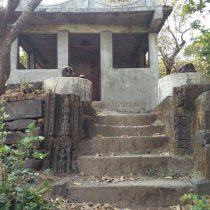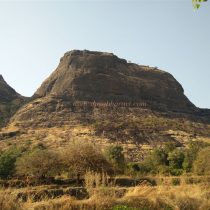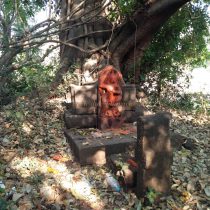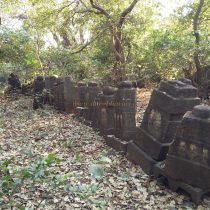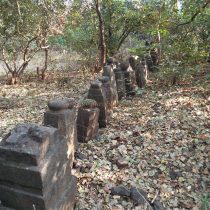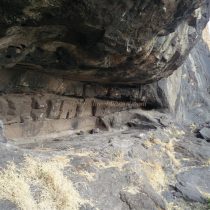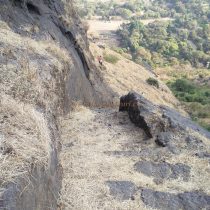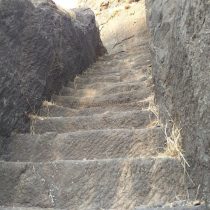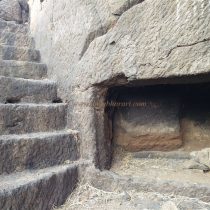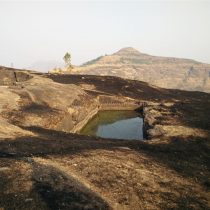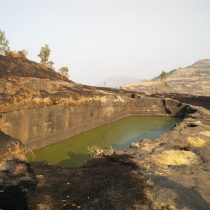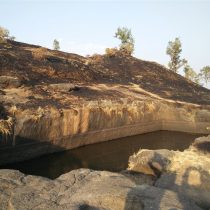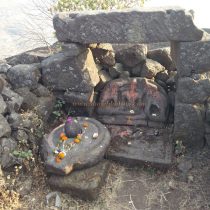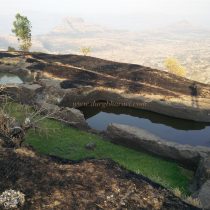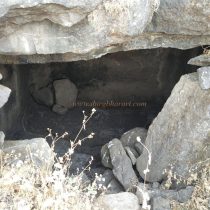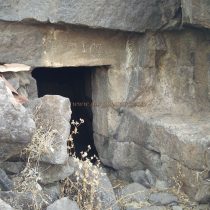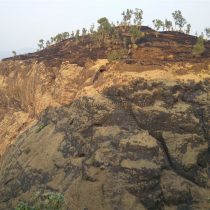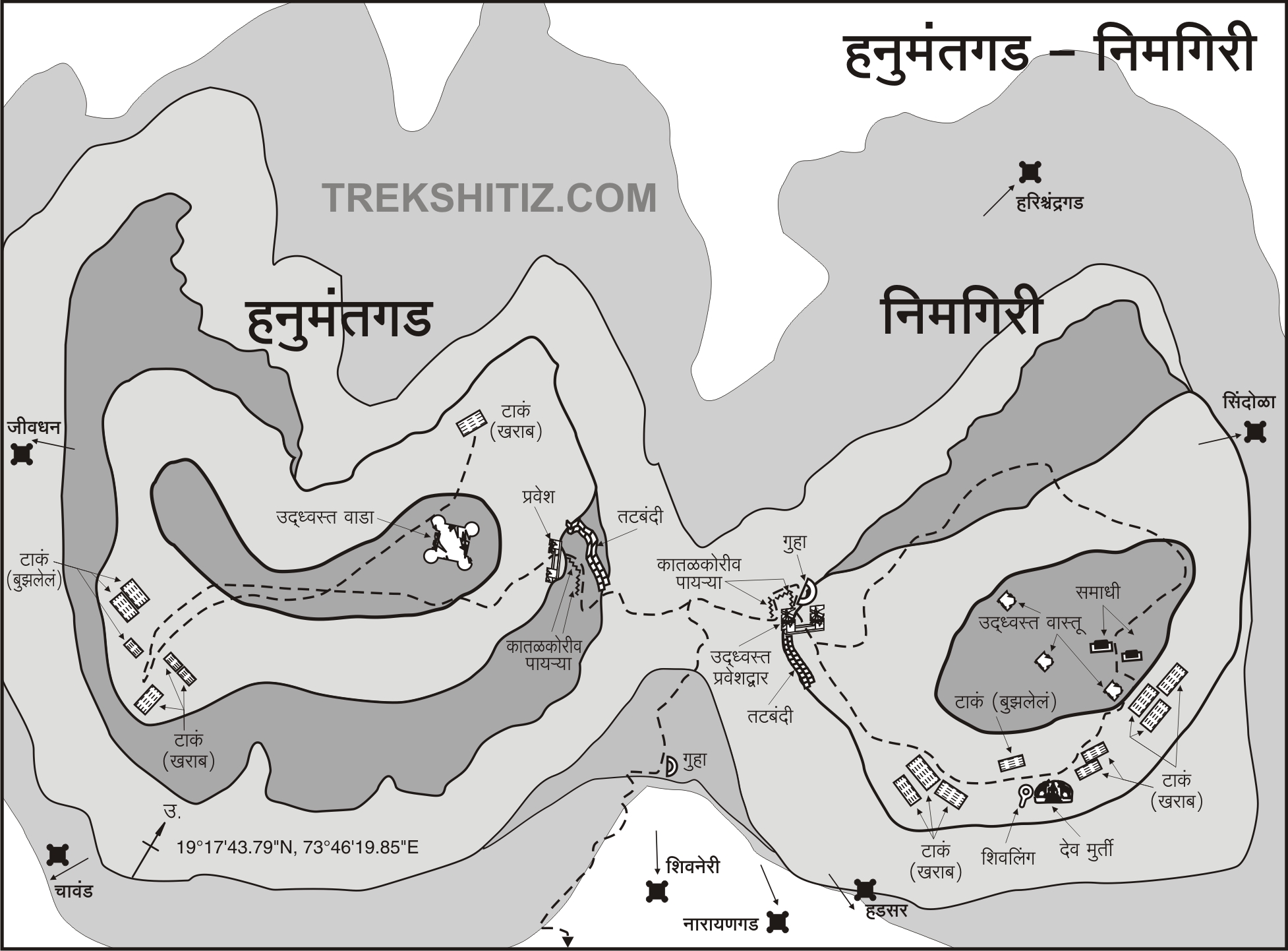NIMGIRI
TYPE : HILL FORT
DISTRICT : PUNE
HEIGHT : 3625 FEET
GRADE : MEDIUM
Satvahan dynasty was one of the major dynasties in Maharashtra. If we look deeper into history, we find mention of Satvahan kings in the caves of Naneghat two thousand years ago. Naneghat, which connects Konkan and Desh, was born during the Satvahan dynasty. At that time, a market was established at a short distance from Naneghat in the village of Jirnanagar i.e. today's Junnar. Fort Nimgiri is one of the forts built on the shoulders of Sahyadri in Maharashtra during the reign of Satvahan. Adjacent to Nimgiri is a fort called Hanumantgad. The two hills of Nimgiri and Hanumantgad forts are separated by a small ravine. The easiest way to get here is to reach Junnar from Pune-Mumbai first. There is a road from Manikdoh dam near Junnar towards Ghatghar village in the direction of Naneghat.
...
This road is 25 km from Junnar and 10 km from Hadsar village. This is the best way to reach Nimgiri, even though the distance of 2 km is increasing. Nimgiri and Hanumantgad are located behind Khandichi Wadi village. After reaching the village, start the climb keeping in mind Nimgiri is the fort on the right side of the gorge and Hanumanthagad on the left side. The first thing you see on this road is a very high voltage pole. Walkthrough the field in front of this pole, turn left and you will see a recently built Kalubai temple. Ancient idols and relics of the temple are scattered in the courtyard and on the way. At the back of the temple are two hero stones and one carved idol. From here there is a large well on the upper stage as you return to the original path and start climbing. Near a tree on the left side of this well, there is an idol of Lord Hanuman on a small quadrangle structure. In front of this idol, at some distance, 42 hero stones are arranged in a row. These hero stones seem to be of recent time and there is not much carving on them. There is an inscription in Modi language on one of these hero stones and human figures, Shivling and Nandi are carved on the rest of the hero stones. On the way from here, there is a bastion and shelter built by the forest department and you have to go up the road between the two. The steep ascent from here leads directly to the foot of the fort. At the end of the steps, a path leads to a cave carved into the Nimgiri hills on the right. The cave, which was dug for surveillance, has been partially carved. From here, the steps carved in the rock lead you straight to Nimgiri fort. These beautiful steps carved in the rock are the precious treasure of this fort. Three of these steps are broken in one place and as these steps are not used much, in some places the soil has accumulated on the steps and the steps are partially buried in the soil, so you have to climb this path carefully. This stage of climbing from the gorge to the top of the fort is thrilling and beautiful. On the way, you come across a guard post carved in the rock, and in 10 minutes you reach the top of Nimgiri through the ruined door. If you are ready to do a little adventure, you have to climb these steps or else take the path below it which goes around to the middle of Hanumantgad and Nimgiri fort and from there, it takes you to the top of Nimgiri fort within 15 minutes. The steps carved in the rock of the fort testify that the fort is of the ancient period. The fort of Nimgiri is situated at an altitude of 3500 feet above sea level. The fort is elliptical and is spread over 10 acres from north to south. Upon entering the fort, to the left of the ruined gate is a guard's cave carved in the rock. The stairs leading up from this cave are sloping. This part of the fort is well fortified. Once inside the door, start the fort round from the right. First, 3 cisterns of water are seen while taking a detour along this path. The water in one of these cisterns can be filtered and used for drinking. In front of this cistern is a small temple at a distance. This temple has a small door with a sculpture of Gajalaxmi in the front corner and a Shivling in front of it. Next to the temple are two cisterns with non-potable water. On the front side of these cisterns, there is a group of another three cisterns and on the left side, there are 3 small graves on the slope of the pinnacle. There are three caves in the next part of the road. One of the caves has collapsed and the other two are used by local herdsmen to shelter their cattle in the rainy season, so these caves are uninhabitable. Inside the last cave are a water cistern and another cave with a small door. If time permits, 5 to 6 people can stay in this inner cave. Except for the guard post in the next part of the fort, there were no remains. From here, start climbing the hummock. Some ruined architectural remains can be seen on this hummock. Chavand, Jeevdhan, Harishchandragad, Hudsar, and Sindola forts are visible from this hill. As Nimgiri fort is in the western valley of Junnar, the Manikdoh reservoir can be seen in front and Pimpalgaon dam reservoir in the back. It takes 1 hour to see the entire fort and 4 hours to see both the forts from the base. As Nimgiri fort is silent about its history, it has been neglected by trekkers. But this fort must be visited to see the steep footpaths carved in rock present here.
© Suresh Nimbalkar

